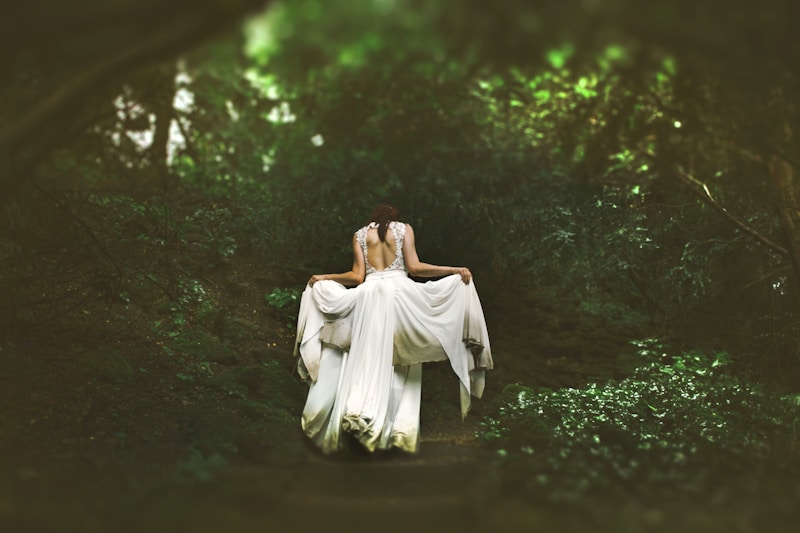Decoding the Elements of a Classic Dress: A Comprehensive Guide to Timeless Fashion
Introduction
Fashion has always intrigued enthusiasts and casual observers alike. Among the myriad of clothing choices, the classic dress stands out as a timeless staple that transcends seasons and trends. In this article, we will delve into the essential elements that constitute a classic dress, exploring its history, elegance, and the various styles that have made it an enduring choice for women globally.
The Timeless Appeal of a Classic Dress
The classic dress is more than just a piece of clothing; it embodies the essence of femininity and style. Whether it's for a formal event, casual outing, or workplace, a classic dress has the ability to adapt to multiple settings while always radiating sophistication. Various factors contribute to its timeless appeal:
- Versatility: A classic dress can be dressed up or down, making it suitable for various occasions.
- Flattering Silhouettes: Designed to enhance the natural curves of the body, classic dresses often come in various styles to suit different body types.
- Rich History: The classic dress has roots in fashion history that date back to the early 20th century, continually evolving yet maintaining its core qualities.
Key Elements of a Classic Dress
Understanding what makes a dress "classic" is essential for anyone looking to invest in timeless pieces. Below are key elements:
| Element | Description |
| Fabric | High-quality fabrics like silk, cotton, or wool are staples for a classic dress, ensuring comfort and durability. |
| Color | Neutral tones such as black, navy, and beige are often favored for their versatility and elegance. |
| Cut | A flattering cut, such as A-line or sheath, enhances the wearer's figure and is crucial for a classic look. |
| Length | Midi or knee-length provides a balance between modesty and elegance. |
| Details | Subtle details like pleats, darts, or a defined waist contribute to the intricate charm of a classic dress. |
The Importance of Fabric
The fabric of a dress serves as the foundation for its overall look and feel. Opting for natural fibers such as cotton, silk, or wool not only exudes elegance but also ensures comfort. Synthetic materials may be tempting due to their lower prices, but they often lack the appeal and longevity of high-quality fabrics. When selecting a classic dress, consider the following:
- Breathability: Choose fabrics that allow airflow, especially for summer events.
- Weight: The weight of the fabric can affect the drape of the dress; lighter fabrics often create a softer silhouette.
Color Choices: The Palette of Elegance
When it comes to classic dresses, color plays a significant role. Neutral shades like black, white, navy, and beige are traditionally favored as they easily complement various accessories and settings. However, muted colors and pastels can also work well to convey elegance without overwhelming the eye. When choosing a color, keep in mind:
- Skin Tone: Select shades that enhance your complexion.
- Occasion: Consider the event and time of day; lighter colors may work better for daytime events.
The Perfect Cut: Finding Your Flattering Silhouette
The cut of a dress can make or break its classic appeal. A-line, sheath, and wrap dresses are some of the most flattering styles that complement different body types. Here are tips for selecting the right cut:
- Hourglass Shape: Opt for fitted and tailored cuts to accentuate your waist.
- Pear Shape: A-line styles work well to balance your proportions.
- Rectangle Shape: Look for dresses that create the illusion of curves, such as those with ruffles or cinched waists.
Dress Length: Striking the Right Balance
The length of a dress is another crucial factor in its classic status. Midi and knee-length styles are often considered the most appropriate for formal occasions, striking a balance between modesty and elegance. When choosing a length, consider:
- Height: Taller individuals may prefer longer lengths, while petite women can benefit from shorter styles that elongate the legs.
- Event Type: Longer lengths are often more suitable for formal events, whereas shorter lengths can work for casual outings.

Details That Define Elegance
While the general components of a classic dress are important, the details truly define its elegance. Subtle features like pleats, darts, or a defined waist can elevate a simple design into something remarkable. Here are a few details to look out for:
- Accents: Small accents, such as buttons or lace trim, can add uniqueness without being overpowering.
- Fit: Tailored pieces that hug the right areas can enhance your silhouette.
Accessorizing Your Classic Dress
Accessorizing appropriately can transform a classic dress into a stunning ensemble. Here are some tips for selecting the right accessories:
- Shoes: Choose elegant footwear such as pumps or classy flats, depending on the occasion.
- Jewelry: Timeless pieces, such as pearl earrings or a simple silver necklace, complement rather than overshadow the dress.
- Bags: Opt for classic clutches or structured handbags in neutral tones.
Maintenance Tips for Your Classic Dress
To ensure your classic dress remains in pristine condition, consider the following maintenance tips:
- Washing: Follow the care label instructions to avoid damage.
- Storage: Store your dress in a cool, dry place and consider using garment bags for protection.
- Repairs: Address any wear and tear promptly to prolong the lifespan of the dress.
Conclusion
Decoding the elements of a classic dress allows us to appreciate its value in fashion. From the choice of fabric to the perfect cut and elegant details, each aspect plays a significant role in creating a timeless piece. Remember to invest in high-quality materials and consider what suits your individual style and body type. By doing so, you'll ensure that your classic dress remains a cherished part of your wardrobe for years to come. Whether it’s for a sophisticated evening out or a casual daytime event, a classic dress never goes out of style.